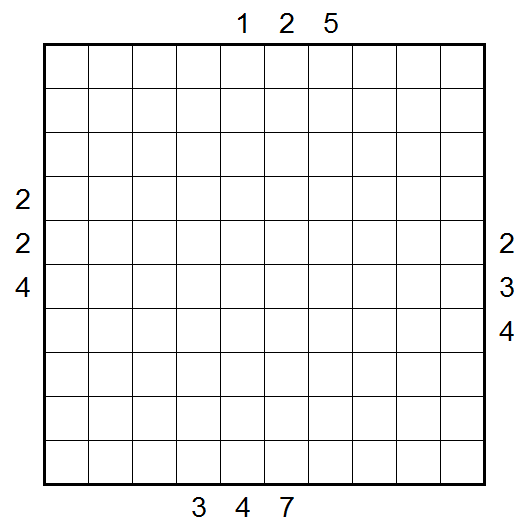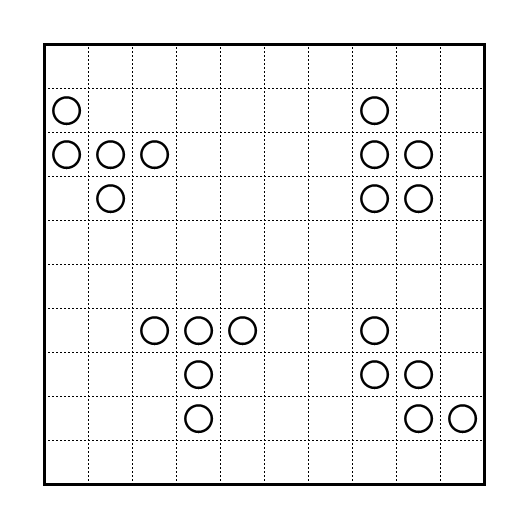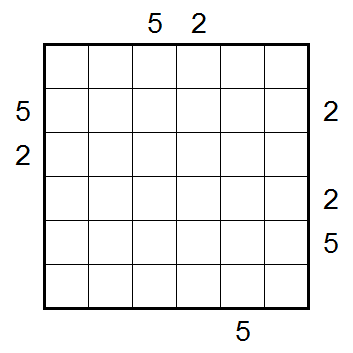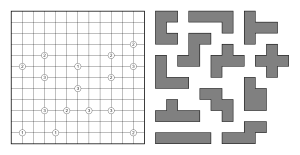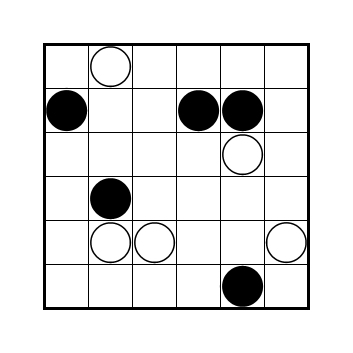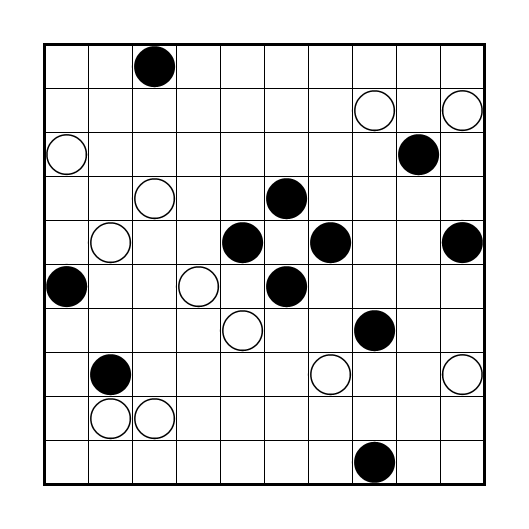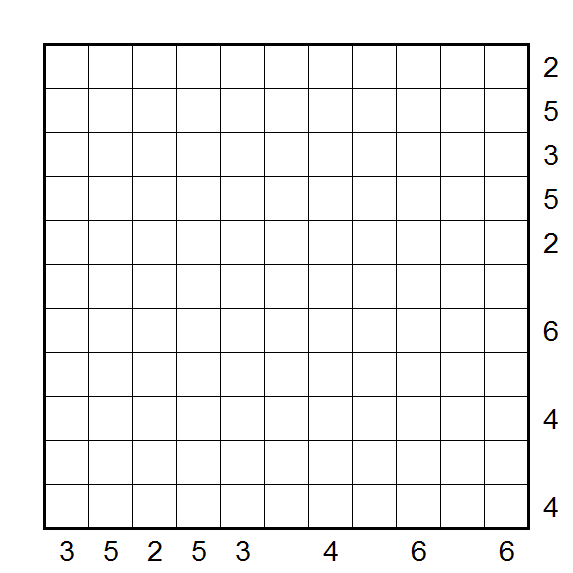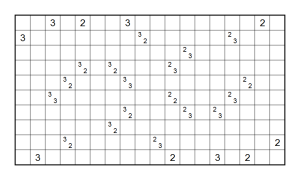This one is a hybrid of Yajilin and Kuromasu (aka Kurodoko). It ended up a bit odd (the first iteration turned out to be broken, and fixing it altered the solving path), but I like it. Reminds me of my Crypto Regional Yajilin, actually.
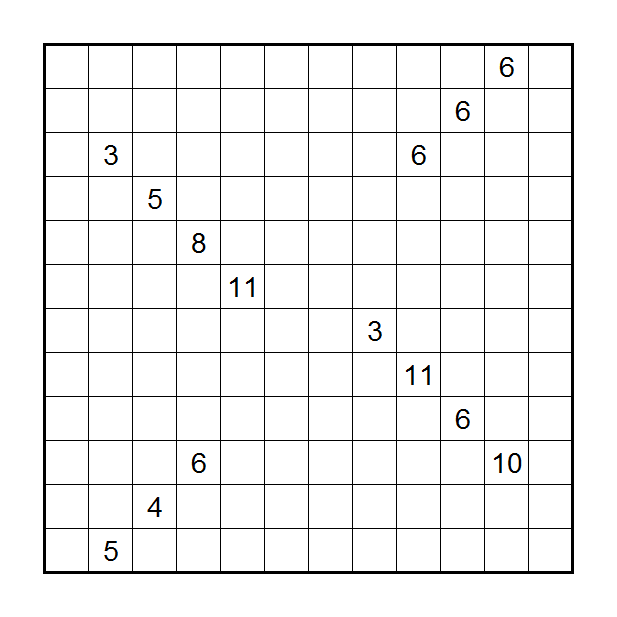
Rules:
- Draw a loop passing through some of the cells, and shade the unvisited cells. The loop passes through the centers of cells, and makes right-angled turns.
- Two shaded cells may not share an edge, but touching by corners is allowed.
- A clue tells the total amount of consecutive horizontally or vertically connected unshaded cells (visited by the loop) connecting to the clue, counting the clue cell as well. Clue cells may not be shaded.
Put more concisely, it’s a Yajilin with Kuromasu clues (but the loop must visit all clue cells as well). This picture should clarify the cell counting rule:
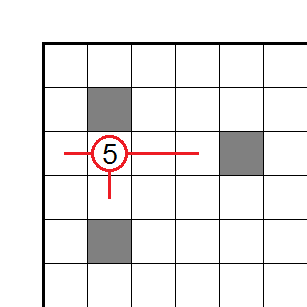
EDIT: Clarified the rules. Unlike in Yajilin, the loop must visit all the clue cells as well, they may not be shaded.
Posted in Puzzle by ArDeeJ, 10/1/14 1:05 PM
2 Comments »
